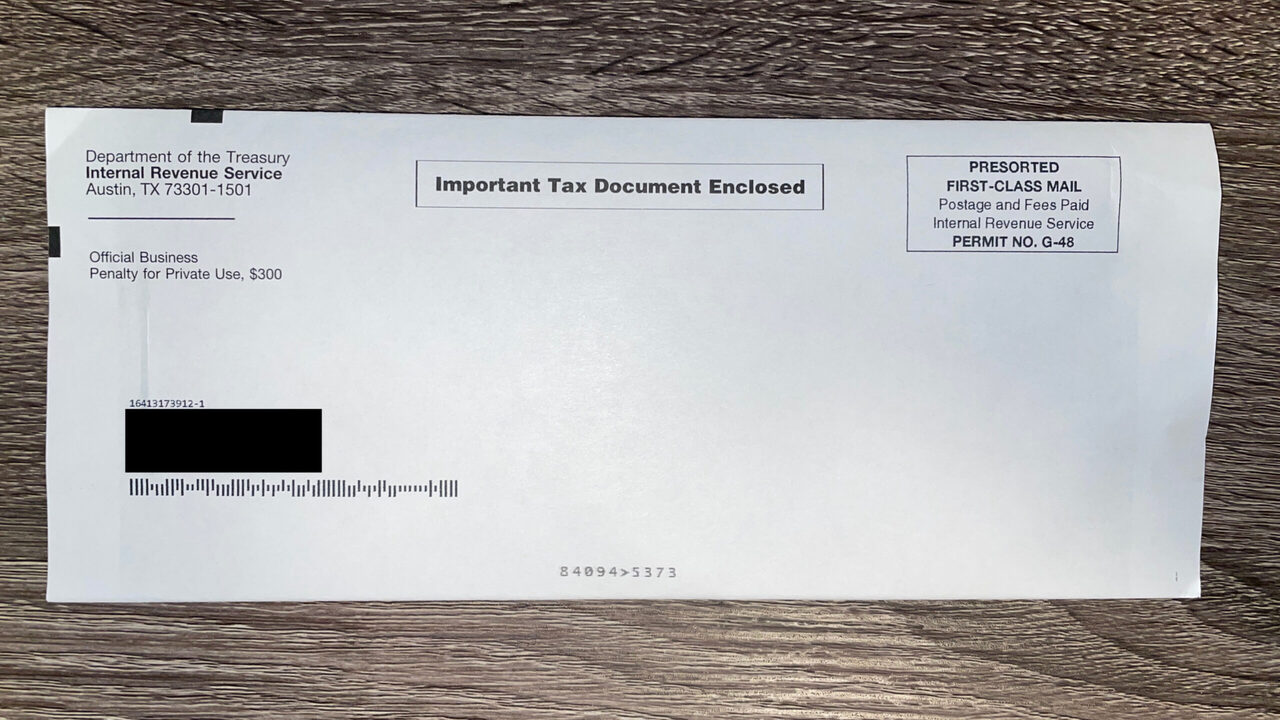

Finance
What Do Certificates Of Deposit Look Like
Modified: February 23, 2024
Discover what certificates of deposit look like and how they can benefit your financial strategy. Learn more about finance and investing with this informative guide.
(Many of the links in this article redirect to a specific reviewed product. Your purchase of these products through affiliate links helps to generate commission for LiveWell, at no extra cost. Learn more)
Table of Contents
- Introduction
- Purpose of Certificates of Deposit
- Features of Certificates of Deposit
- Types of Certificates of Deposit
- How to Open a Certificate of Deposit Account
- Benefits of Investing in Certificates of Deposit
- Considerations Before Investing in Certificates of Deposit
- Risks Associated with Certificates of Deposit
- Comparison with Other Investment Options
- Conclusion
Introduction
Certificates of Deposit (CDs) are a popular financial instrument that offer individuals a safe and secure way to invest their money while earning a fixed rate of interest. This form of investment, offered by banks and credit unions, is known for its stability and predictable returns.
CDs are appealing to both seasoned investors and those new to the world of finance. They provide a low-risk option for individuals who prioritize the security of their funds over potentially higher but uncertain returns. In today’s volatile market, many people seek the stability and peace of mind that CDs offer.
The concept of the certificate of deposit is straightforward. When you open a CD account, you agree to deposit a specific amount of money for a fixed period, known as the term. In return, the financial institution provides you with a certificate, which represents your investment and outlines the terms and conditions associated with it.
The primary appeal of CDs lies in their guaranteed return. Unlike other investments like stocks or mutual funds, CDs provide a predetermined interest rate for the entire term of the investment. This means that you know exactly how much you will earn when the CD matures, regardless of market fluctuations.
Certificates of Deposit are a versatile investment tool that allows you to choose the term length that best suits your financial goals. Whether you’re saving for a short-term expense or planning for a long-term financial goal, you can select a CD with a term that aligns with your objectives.
In the following sections, we will delve deeper into the purpose, features, benefits, and considerations associated with Certificates of Deposit. By familiarizing yourself with these aspects, you’ll be better equipped to make informed decisions about including them in your investment portfolio.
Purpose of Certificates of Deposit
The primary purpose of Certificates of Deposit (CDs) is to provide individuals with a secure and stable investment option. They offer a way to earn interest on idle funds while preserving the principal amount. CDs are particularly attractive for those seeking a low-risk investment and a fixed rate of return.
One of the main purposes of CDs is to provide a safe haven for your money. While other investment options may come with higher potential returns, they also carry a greater level of risk. CDs are backed by banking institutions and, in many cases, insured by the Federal Deposit Insurance Corporation (FDIC), which safeguards the investors’ funds up to a certain limit. This reassures investors that their principal amount is protected, even in the event of a financial institution’s failure.
Another purpose of CDs is to generate a steady stream of income. The interest rate offered on CDs is typically higher than that of a regular savings account, making them an attractive choice for individuals seeking to enhance their earnings without exposing their funds to market volatility.
Certificates of Deposit are also utilized for short-term savings goals. If you are saving for a specific upcoming expense, such as a down payment on a house or a vacation, a CD can help you set aside funds and earn interest while keeping them separate from your day-to-day spending account. The fixed term of the CD ensures that your money is locked in until the maturity date, making it less tempting to access these funds prematurely.
CDs also serve as a tool for diversifying your investment portfolio. By including CDs alongside other investments like stocks and bonds, you can effectively balance the risk and return in your overall financial strategy. CDs provide stability and can act as a buffer against market downturns or unexpected financial emergencies, ensuring that your portfolio maintains a solid foundation.
Furthermore, Certificates of Deposit can be utilized as a means to achieve a specific financial goal within a defined time frame. Whether you’re saving for a child’s college education, planning for retirement, or building an emergency fund, CDs offer a disciplined approach to reaching these targets while earning interest along the way.
In summary, the purpose of Certificates of Deposit is to provide investors with a secure, stable, and predictable investment option. They are ideal for individuals seeking to preserve their principal, earn a fixed rate of return, and achieve short-term savings goals, all while minimizing risks associated with market fluctuations.
Features of Certificates of Deposit
Certificates of Deposit (CDs) come with several key features that make them a unique investment option worth considering. Understanding these features will help you make informed decisions when choosing and managing your CD investments.
1. Fixed Interest Rate: One of the defining features of CDs is the fixed interest rate. When you open a CD, the bank or credit union offers you a specific interest rate that remains constant throughout the entire term of the investment. This means that regardless of any fluctuations in the market, your interest rate and earnings remain secure.
2. Term Length: CDs are available in a variety of term lengths, ranging from a few months to several years. The term length determines how long your money will be tied up in the CD and when you will have access to both your initial investment and the interest earned. Generally, longer-term CDs offer higher interest rates, providing the potential for greater returns.
3. Maturity Date: The maturity date marks the end of the CD term. On this date, your initial investment plus the accrued interest is available for withdrawal. You have the option to reinvest the funds into another CD or withdraw them as cash. It’s important to note that accessing the funds before the maturity date may incur penalties.
4. Minimum Deposit Requirement: Most banks and credit unions impose a minimum deposit requirement to open a CD. This amount varies depending on the financial institution and the type of CD you choose. Generally, the larger the initial deposit, the higher the interest rate offered.
5. Compounding Options: CDs may offer different compounding options for interest accrual. The most common options are simple interest, where interest is paid out at regular intervals, and compound interest, where the interest is reinvested back into the CD to earn additional interest. Compound interest can significantly boost your overall returns over the CD term.
6. FDIC Insurance: CDs offered by FDIC-insured banks are covered by the Federal Deposit Insurance Corporation, up to a certain limit. This insurance protects your principal and interest earnings in the event of the bank’s failure. It’s crucial to check if the institution offering the CD is FDIC insured before investing.
7. Callable CDs: Some CDs come with a callable feature, which means the issuer has the option to redeem the CD before its maturity date. Callable CDs often offer higher interest rates but carry the risk that the issuer may choose to terminate the CD early, leaving you with the need to find alternative investment options.
8. Non-Callable CDs: Non-callable CDs, on the other hand, cannot be redeemed by the issuer before the maturity date. This offers more stability and assurance that your investment will remain intact until the agreed-upon maturity date.
By understanding the features of Certificates of Deposit, you can choose the CD that aligns with your investment goals, risk tolerance, and liquidity needs. Whether you prefer a shorter-term CD for quick access to funds or a longer-term CD for higher interest rates, these features allow you to tailor your investment strategy to your individual financial needs.
Types of Certificates of Deposit
Certificates of Deposit (CDs) come in various types, allowing investors to choose the option that best suits their financial goals and preferences. Understanding the different types of CDs can help you make an informed decision and maximize your investment potential.
1. Traditional CDs: Traditional CDs are the most common type and typically require a minimum deposit amount. These CDs have fixed interest rates and term lengths ranging from a few months to several years. Investors receive their principal amount and accrued interest when the CD matures.
2. Jumbo CDs: Jumbo CDs are similar to traditional CDs, but with higher minimum deposit requirements. These CDs are designed for individuals with significant amounts of money to invest. In return for the larger deposit, jumbo CDs often offer higher interest rates compared to regular CDs.
3. Callable CDs: Callable CDs provide the issuer with the option to redeem the CD before its maturity date. Callable CDs often come with higher interest rates compared to traditional CDs. However, the flexibility for the issuer to call back the CD early introduces an element of uncertainty for investors.
4. Bump-Up CDs: Bump-Up CDs grant investors the option to “bump up” their interest rate to a higher level if market rates rise. This feature provides some flexibility for investors who want to take advantage of increasing interest rates during the CD term. It’s important to note that bump-up options may come with certain restrictions and limitations.
5. Step-Up CDs: Step-Up CDs come with pre-determined intervals where the interest rate increases over the CD’s term. This feature allows investors to benefit from rising interest rates without having to actively monitor the market or request an adjustment. Step-up CDs provide a predictable way to earn a higher rate of interest over time.
6. Liquid CDs: Liquid CDs offer more flexibility in terms of accessing your funds before the CD matures. These CDs allow partial or complete withdrawal of the funds without incurring hefty penalties. While liquid CDs provide liquidity, they often come with lower interest rates compared to traditional CDs.
7. Brokered CDs: Brokered CDs are purchased through brokerage firms rather than directly from a bank or credit union. In this case, the brokerage firm acts as an intermediary and offers a wide selection of CDs from different financial institutions. Brokered CDs may provide access to higher yields and a more diversified range of options.
8. No-Penalty CDs: No-penalty CDs offer investors the ability to withdraw funds before the maturity date without facing any penalties. These CDs are a suitable option for individuals who require access to their funds in case of financial emergencies or unexpected needs. The trade-off is that no-penalty CDs typically offer lower interest rates compared to traditional CDs.
It’s important to research and evaluate the different types of CDs available to you, considering factors such as interest rates, liquidity needs, and the level of risk you’re willing to take. By choosing the right type of CD, you can align your investment strategy with your financial goals and maximize your returns.
How to Open a Certificate of Deposit Account
Opening a Certificate of Deposit (CD) account is a straightforward process that requires a few steps. By following these steps, you can begin investing in a CD and start earning a fixed rate of interest on your money.
1. Research and Compare: Start by researching different banks and credit unions that offer CDs. Compare the interest rates, terms, and minimum deposit requirements to find the institution that best aligns with your investment goals.
2. Choose the Type of CD: Determine the type of CD that suits your needs, such as a traditional CD, jumbo CD, or a CD with specific features like callable or bump-up options. Consider factors like risk tolerance, liquidity needs, and desired returns when making your decision.
3. Gather Required Documents: Collect the necessary identification documents, such as your government-issued ID, Social Security number, and proof of address. Different financial institutions may have slightly different requirements, so be sure to check with the specific bank or credit union beforehand.
4. Visit the Bank or Credit Union: Visit the selected bank or credit union in person or explore their online banking options. If visiting in person, schedule an appointment with a representative to open your CD account. If opting for online banking, follow the instructions provided to open the account remotely.
5. Submit Application and Deposit: Fill out the CD application form provided by the bank or credit union. Provide your personal information, preferred term length, deposit amount, and any additional details required. Submit the application along with your initial deposit, which should meet the minimum requirement specified by the financial institution.
6. Review Terms and Conditions: Carefully review the terms and conditions of the CD account. Ensure that you understand the interest rate, term length, maturity date, any penalties for early withdrawal, and any other applicable fees. Seek clarification from the bank or credit union representative if you have any questions or concerns.
7. Receive Confirmation and Documentation: Once your application has been processed and approved, you will receive a confirmation of your CD account opening. The bank or credit union will provide you with a certificate or statement that outlines the details of your CD, including the interest rate, term, and maturity date.
8. Manage and Monitor Your CD: Keep track of your CD account and its progress. If you have online access, log in regularly to check the account’s balance and interest accrual. Make note of the maturity date to ensure you are aware of when the CD will reach the end of its term.
Opening a Certificate of Deposit is a simple and secure way to invest your money. By following these steps and selecting the right CD for your financial goals, you can start growing your savings and earning a fixed rate of return.
Benefits of Investing in Certificates of Deposit
Investing in Certificates of Deposit (CDs) offers several benefits that make them an attractive option for individuals looking to grow their savings while minimizing risk. Understanding these advantages can help you make informed decisions about including CDs in your investment portfolio. Here are some key benefits of investing in CDs:
1. Security and Stability: CDs are considered one of the safest investment options available. They are typically backed by banking institutions and may be insured by the Federal Deposit Insurance Corporation (FDIC), providing assurance that your principal amount is protected. This stability makes CDs ideal for individuals who prioritize the security of their funds over higher but uncertain returns.
2. Guaranteed Returns: CDs offer a fixed rate of interest for the entire term of the investment. This means that regardless of market fluctuations, you know exactly how much you will earn when the CD matures. This predictability makes it easier to plan and project your savings and investment goals.
3. Diversification: Including CDs in your investment portfolio can help diversify your assets. CDs offer stability and act as a counterbalance to higher-risk investments like stocks or mutual funds. By diversifying, you can reduce the overall risk of your portfolio and provide a buffer during market downturns.
4. Flexibility in Term Length: CDs come with a variety of term options, ranging from a few months to several years. This flexibility allows you to choose a term that aligns with your financial goals. Whether you need a short-term option for upcoming expenses or a long-term investment for future needs, CDs can be tailored to meet your specific time horizon.
5. Higher Interest Rates: Compared to regular savings accounts, CDs often offer higher interest rates. This allows your money to grow at a faster pace and earn more substantial returns over time. The longer the term of the CD, the higher the potential interest rate typically offered.
6. Compounding Interest: Many CDs offer compounding interest, meaning that the interest earned is reinvested back into the CD. This compounding effect can significantly boost your overall returns over the term of the CD and provide greater potential for long-term growth.
7. Specific Saving Goals: CDs are an excellent tool for saving for specific goals within a defined timeframe. Whether you’re saving for a down payment on a house, college tuition, or a dream vacation, you can open a CD with a term that aligns with your target date. This disciplined approach helps ensure that funds are set aside and earn interest until you’re ready to access them.
8. Ease of Access and Convenience: Opening a CD account is a straightforward process, and many banks and credit unions offer online or mobile banking options for managing your CD. This makes it convenient to monitor your savings, track your interest accrual, and access your funds when the CD matures.
In summary, investing in Certificates of Deposit offers the benefits of security, guaranteed returns, diversification, flexibility, higher interest rates, compounding interest, specific savings goals, and ease of access. By considering these benefits, you can determine if CDs are a suitable investment option to help you achieve your financial objectives.
Considerations Before Investing in Certificates of Deposit
Before investing in Certificates of Deposit (CDs), it is important to carefully consider a few key factors to ensure they align with your financial goals and needs. By taking these considerations into account, you can make informed decisions and maximize the benefits of your CD investments. Here are some important considerations to keep in mind:
1. Time Horizon: CD investments come with a fixed term length, and withdrawing funds before the maturity date may result in penalties or loss of interest. Evaluate your time horizon and determine if locking up your funds for the specified term aligns with your financial goals. If you anticipate needing access to your money in the near future, consider alternative options that offer more liquidity.
2. Interest Rates: While CDs offer stability and guaranteed returns, the interest rates may not always keep pace with inflation. Evaluate market interest rates and compare them with the rates offered on CDs. If you expect interest rates to rise in the near future, it may be worth considering shorter-term CDs or other investment options that offer more potential for growth.
3. Penalties for Early Withdrawal: Understand the penalties associated with early withdrawal from a CD. Breaking the CD before the maturity date typically results in a loss of interest or a percentage of the principal amount. Assess your financial situation and potential liquidity needs to ensure you can commit to the CD term and avoid unnecessary penalties.
4. Opportunity Cost: Consider the opportunity cost of investing in CDs compared to other investment options. While CDs provide stability, they may not offer the same potential for higher returns as more volatile investments like stocks or mutual funds. Assess your risk tolerance and evaluate other investment vehicles that may align better with your financial objectives.
5. Minimum Deposit Requirements: Different banks and credit unions have varying minimum deposit requirements for opening a CD. Ensure that you have sufficient funds to meet these requirements. Additionally, it is important to consider if tying up that amount of money in a CD aligns with your overall financial strategy and goals.
6. Inflation and Purchasing Power: While CDs offer stability, it is important to consider the impact of inflation on your savings. If the rate of inflation exceeds the interest rate of the CD, the purchasing power of your money may erode over time. Evaluate the current inflation rate and the potential impact on the real value of your savings.
7. Laddering Strategy: Laddering is a strategy where you divide your investment into multiple CDs with different maturity dates. This approach enables you to have regular access to your funds and potentially take advantage of higher interest rates as CDs mature. Consider whether this strategy aligns with your liquidity needs and if it fits within your investment plan.
8. FDIC Insurance: Ensure that the financial institution offering the CD is FDIC insured, especially if the investment amount exceeds the FDIC insurance limit. FDIC insurance protects your deposits in case of bank failure. Verify the insurance coverage limits and assess the safety of the chosen financial institution.
By carefully considering these factors, you can make well-informed decisions about investing in Certificates of Deposit. Assess your financial goals, risk tolerance, liquidity needs, and the current market conditions to determine if CDs are the right investment vehicle for you.
Risks Associated with Certificates of Deposit
While Certificates of Deposit (CDs) are generally considered low-risk investments, there are still some risks associated with them that you should be aware of before investing. Understanding these risks will help you make informed decisions and manage your investment effectively. Here are some key risks associated with CDs:
1. Interest Rate Risk: CD investments are vulnerable to interest rate risk. If you lock your funds into a CD with a fixed interest rate and market interest rates rise, you may miss out on the opportunity to earn higher returns. Conversely, if you lock in a CD with a high fixed interest rate and market interest rates decrease, you will still earn the predetermined rate, but it may be less attractive compared to other available investments.
2. Inflation Risk: CDs may not offer sufficient returns to keep pace with inflation. If the rate of inflation exceeds the interest rate earned on the CD, the purchasing power of your funds may erode over time. This means that the real value of your investment may decrease, leading to a loss of purchasing power when you eventually withdraw the funds.
3. Liquidity Risk: CDs are fixed-term investments, meaning your money is locked in until the maturity date. If you need to access your funds before the CD matures, you may face penalties or loss of interest. This lack of liquidity can be a risk if you anticipate needing your funds for emergencies or unexpected expenses. It is important to evaluate your potential liquidity needs and ensure you have sufficient funds outside of your CD investment.
4. Early Withdrawal Penalties: If you need to withdraw funds from a CD before the maturity date, you will likely face penalties. These penalties can vary depending on the financial institution and the terms of the CD. It is important to understand these penalties and factor them into your decision-making process. Consider other options that provide more flexibility if you anticipate needing access to your funds in the near term.
5. Credit Risk: Although rare, there is a small element of credit risk associated with CDs. If the financial institution issuing the CD fails, there is a potential risk of losing your principal and interest earnings. However, CDs offered by FDIC-insured banks are protected up to the FDIC insurance limit, providing some level of security. Evaluate the financial health and credibility of the institution before investing in their CDs.
6. Callable CD Risk: Callable CDs come with the risk that the issuer may redeem the CD before the maturity date. While callable CDs often offer higher interest rates, this means your investment could be terminated prematurely, leaving you with the need to find alternative investment options at possibly lower interest rates.
7. Opportunity Cost: By investing in CDs, you may miss out on potential higher returns available in riskier investments such as stocks or mutual funds. This opportunity cost is the potential gain you could have achieved by allocating your funds to other investments with greater growth potential. Consider whether the stability and fixed returns of CDs align with your risk tolerance and long-term investment objectives.
While CDs are generally considered safe investments, it is important to be aware of these risks and evaluate them in the context of your overall financial plan. By understanding and managing these risks effectively, you can make informed decisions to achieve your investment goals while preserving the security and stability offered by CDs.
Comparison with Other Investment Options
When considering investment options, it is essential to compare Certificates of Deposit (CDs) with other available choices to determine the best fit for your financial goals and risk tolerance. Here is a comparison of CDs with some common investment options:
1. Savings Accounts: Compared to traditional savings accounts, CDs generally offer higher interest rates. While savings accounts provide easy access to funds, CDs require locking in your money for a fixed term. If you have surplus funds that you do not require immediate access to, CDs can provide a higher return on your investment compared to regular savings accounts.
2. Stocks: Unlike CDs, stocks are a higher-risk investment option. Stocks represent ownership in a company, and their value can fluctuate considerably based on market conditions. While stocks potentially offer greater growth and higher returns, they come with a higher level of volatility and risk. CDs, on the other hand, provide stability and predictable returns, making them a more conservative choice for risk-averse investors.
3. Bonds: Bonds are another investment option that carries less risk compared to stocks. Bonds represent debt obligations issued by governments, municipalities, or corporations. Like CDs, bonds offer fixed interest rates and have a predetermined term. However, bonds may carry higher risks depending on the issuer’s creditworthiness, market conditions, and interest rate fluctuations. CDs, being more secure and stable, are considered a safer option for preserving capital and earning a guaranteed rate of return.
4. Money Market Accounts (MMAs): MMAs are similar to savings accounts but typically offer higher interest rates and additional features such as check-writing privileges. While MMAs provide flexibility and competitive interest rates, CDs generally offer higher rates over a fixed term. If you can commit to a specific time frame without requiring frequent access to your funds, CDs may provide better returns.
5. Real Estate: Real estate investments involve purchasing property or real estate investment trusts (REITs). Real estate can offer potential long-term appreciation and rental income. However, it requires substantial capital and carries risks such as property value fluctuations, market conditions, and maintenance costs. CDs, by contrast, are a lower-risk option that offers a fixed rate of return without the complexities and involvement associated with real estate investing.
7. Mutual Funds: Mutual funds pool funds from multiple investors to invest in a diversified portfolio of stocks, bonds, or other assets. Mutual funds offer the potential for higher returns but come with higher risks due to market fluctuations. CDs, with their guaranteed returns and stability, are less risky but may not provide the same growth potential as mutual funds. Consider your risk tolerance and investment objectives when deciding between the two.
Each investment option has its own benefits and considerations. CDs offer stability, security, and guaranteed returns over a fixed term, making them a preferred choice for risk-averse investors who prioritize capital preservation. However, if you have a higher risk tolerance and seek greater growth potential, other investment options such as stocks or mutual funds may be more suitable. It is important to evaluate your financial goals, time horizon, and risk appetite before making investment decisions.
Conclusion
Certificates of Deposit (CDs) are a valuable investment option for individuals seeking stability, predictable returns, and a low-risk approach to growing their savings. With their fixed interest rates, various term lengths, and FDIC insurance, CDs provide peace of mind and a secure way to invest.
By investing in CDs, you can achieve several financial goals, including short-term savings, long-term planning, and diversification of your investment portfolio. CDs offer a guaranteed rate of return, providing reassurance in an unpredictable economic landscape.
However, it is important to consider the potential risks and drawbacks of CDs. These include the impact of inflation, limited liquidity, and the opportunity cost of potentially higher returns from more aggressive investment options. Evaluating these factors alongside your financial objectives will help you make informed decisions about incorporating CDs into your investment strategy.
Before investing in CDs, take the time to research and compare different financial institutions, interest rates, and terms. Consider your time horizon, liquidity needs, and risk tolerance. Understand the terms and conditions, including early withdrawal penalties and the potential impact of interest rate changes.
Ultimately, CDs can be an excellent addition to a well-rounded investment portfolio. They offer stability, security, and predictability, making them a suitable choice for individuals looking to protect their principal and earn a reliable return. CDs are particularly beneficial when saving for short-term goals or when seeking a conservative investment approach to support long-term financial objectives.
Remember to reassess your investment strategy periodically and adjust accordingly. As your financial situation evolves, your investment preferences may change. Regularly reviewing your CDs and exploring other investment options will help ensure that your investment strategy remains aligned with your evolving financial goals.
In conclusion, Certificates of Deposit offer a safe, secure, and predictable way to grow your savings. By carefully considering the benefits, risks, and your personal financial circumstances, you can utilize CDs as a valuable tool within your overall investment strategy.














